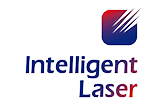A machine vision system can perform continuous inspections, improving product quality, increasing yield, and reducing production costs. It ensures consistent product appearance and quality while reducing unnecessary processing steps.
Machine vision refers to the automatic visual inspection of manufactured goods using industrial cameras, lenses, and lighting. Robot vision systems provide a fast and reliable way to inspect parts online. With robot vision systems, every part on a high-speed production line can be imaged and inspected to ensure 100% quality control.
Basic components of robot vision systems
A robot's vision system, also known as an automatic vision system or visual inspection system, consists of several components that are common to most systems.
The basic components of a robot vision system include the following five parts: lighting system, sensor, vision processing system, processing hardware, and software algorithms. This article will primarily focus on the lighting system, sensor, and vision processing system.
The lighting used in a robot vision system should be selected to maximize the contrast of any features being measured or observed while minimizing the contrast of all other features of the part. Achieving this goal may require altering the amount of light used, the way that it is used, and the position of the light source relative to the part and optical system or camera.
In a robotic vision system, the sensor is used to capture light from the optical system and convert it into a digital image. The sensors capture light using CMOS technology and convert it into a set of pixels that display the light in different areas of the observed object. The sensors are measured by their resolution, which indicates the number of available pixels in the digital image. Sensors with higher resolution can generate images with more pixels, which typically translate into higher image quality and stronger detail resolution.
The vision processing unit in a robot vision system extracts data from digital images, using software to perform specific functions and then evaluate the observed part. These evaluations are pre-programmed conditions that define the standards for accepting or rejecting the observed part.
Benefits of adding a robot vision system
Adding a vision system to a robot allows it to quickly locate targets within its work range, reducing the need for complex and expensive equipment. This increases the flexibility of robot automation to adapt to changes in part size, shape, and position, thereby reducing the complexity of production units. By adding a vision system, robots become practical for palletizing and depalletizing, assembling components, unloading molds, lifting parts from shelves, and removing parts from boxes. They can also track and pick up moving parts on a conveyor.
To optimize production, robots must be correctly installed with a robotic vision system, and they must coordinate with existing machinery and work units. The integrated vision system ensures the accuracy and efficiency of a robot's function and has a significant impact on the production line. The robot vision system determines the exact location of the conveyor and the robot controller adds speed information from encoders on conveyors so that the vision system can track and pick up products in motion. This eliminates the need for stopping the conveyor or using expensive fixtures.
The vision system can simplify unit designs and reduce costs, making robot automation easier to justify rather than rendering each part precisely in the same position and orientation for the robot to pick up.
